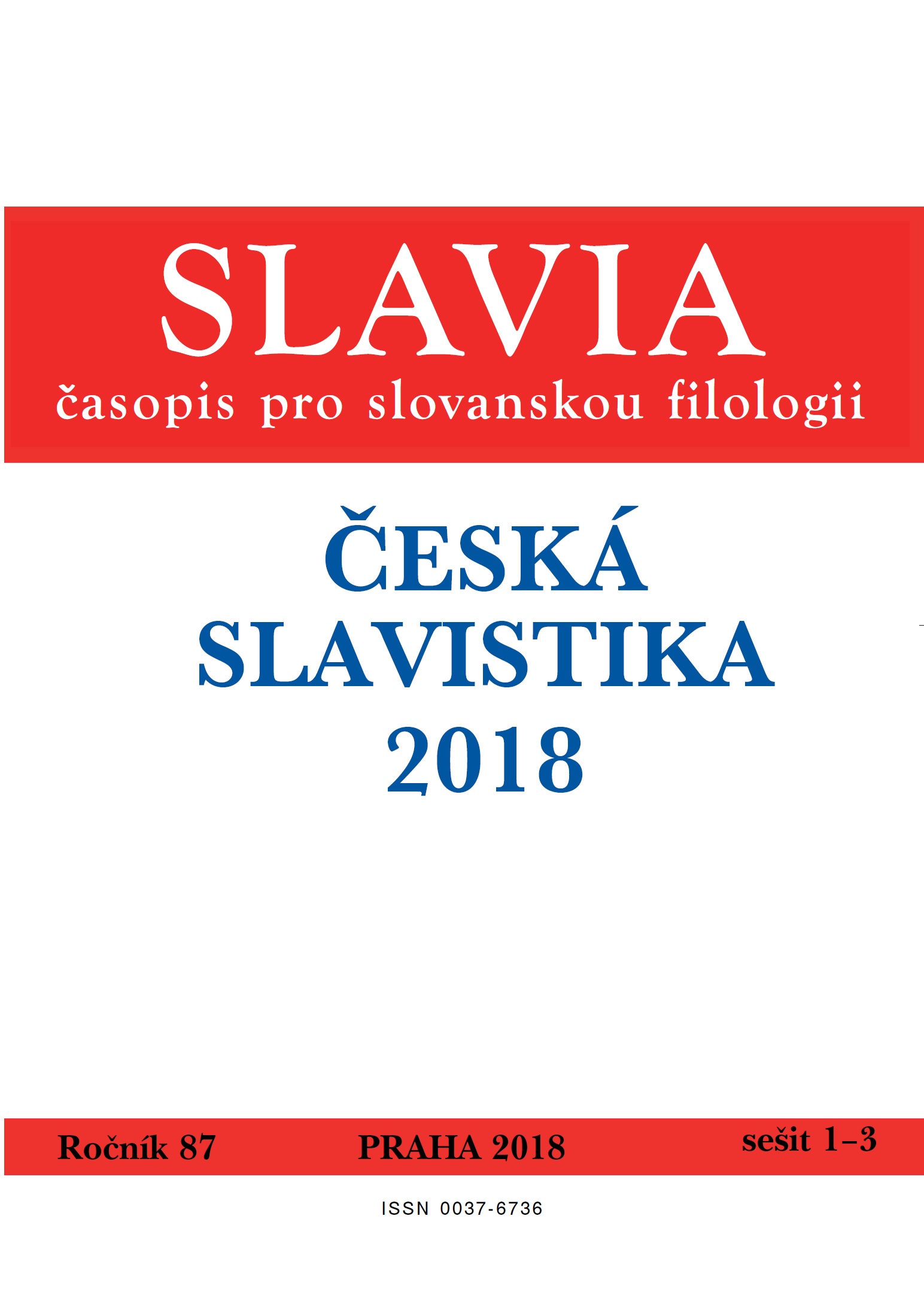K příčinám pozdně praslovanské slabičné kontrakce (nejen) z pohledu gramatikalizační teorie
Towards the Causes of Late Common Slavic Syllabic Contranction (not only) from the Point of View of the Grammaticalization Theory
Author(s): Miroslav VeprekSubject(s): Theoretical Linguistics
Published by: AV ČR - Akademie věd České republiky - Slovanský ústav and Euroslavica
Keywords: contraction; Common Slavic; grammaticalization
Summary/Abstract: The syllabic contraction dated into the late Common Slavic period is well described and analysed in the scholar literature. The causes of the language change are most often found in a weak position of the phoneme j (i̯) in the Common Slavic phonological system, but some scholars point out to morphological conditions of the change. J. Marvan characterises the change as ‘tentative’, which means that the contracted forms were ‘tested’ in the language at first and, only in the cases of their acceptation in the system, implemented. Beside the ‘regular contraction’ which had the center in the Proto-Czech territory and did not reach the whole Slavic area, other kinds of contractions can be found in the late Common Slavic, especially the phonological- -morphological development in the compound declension of adjectives and in forms of the imperfect tense. These language forms were influenced by the grammaticalization processes, so there is a question if the grammaticalization (older then the contraction) could have been one of the causes of the contraction. I propose the hypothesis that the older Slavic contraction in the compound adjective declension and in the imperfect tense could have contributed to the weakening of the position of the phoneme j in the late Common Slavic, or even served directly as a stimulus to the contraction which later affected the Slavic area with the center in the Czech territory. The direct influence of the grammaticalization process on the contraction does not have to be rejected, when there are also parallels of development in other languages. The described process could be supported by the relatively high frequency of contracted forms in Common Slavic, as we can partially deduce from the illustrative frequency analysis based on the Church Slavic language material.
Journal: Slavia - časopis pro slovanskou filologii
- Issue Year: LXXXVII/2018
- Issue No: 1-3
- Page Range: 382-392
- Page Count: 11
- Language: Czech
- Content File-PDF

